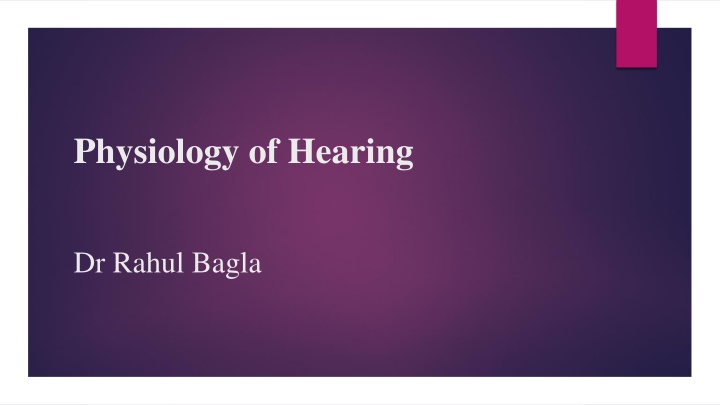Accelerating Off-Grid Energy Market in Nigeria
Nigeria Off-Grid Market Accelerator Program (NOMAP) is a collaborative initiative tackling energy market barriers in Nigeria with a focus on market intelligence, payment systems, and productive use technologies. Supported by Shell Foundation, USAID, and FCDO, NOMAP aims to increase access to solar home systems and improve payment collection efficiency for last-mile customers.
Uploaded on Apr 04, 2025 | 0 Views
Download Presentation

Please find below an Image/Link to download the presentation.
The content on the website is provided AS IS for your information and personal use only. It may not be sold, licensed, or shared on other websites without obtaining consent from the author.If you encounter any issues during the download, it is possible that the publisher has removed the file from their server.
You are allowed to download the files provided on this website for personal or commercial use, subject to the condition that they are used lawfully. All files are the property of their respective owners.
The content on the website is provided AS IS for your information and personal use only. It may not be sold, licensed, or shared on other websites without obtaining consent from the author.
E N D
Presentation Transcript
Physiology of Hearing Dr Rahul Bagla
Introduction to Hearing Overview: Hearing involves the neural perception of sound energy, which includes the identification (what?) and localization (from where?) of sounds. Anatomy of the Ear: The ear consists of three main parts that play specific roles in hearing: 1. External Ear: Collects sound from the environment and funnels it toward the eardrum. 2. Middle Ear: Transmits sound vibrations from the eardrum to the inner ear through three small bones (ossicles). 3. Cochlea (Inner Ear): Transforms sound vibrations into electrical signals that can be processed by the brain.
What is Sound? Definition: Sound waves are produced by the compression and decompression of air molecules by a vibrating object. Structure of Sound Waves: Sound waves are composed of alternating areas of compressed and spread-out air molecules. Compression: Air molecules are packed together when the sound source o vibrates. Rarefaction:Air molecules are spread apart, creating a low-pressure area. o For example, when a tuning fork is struck, it compresses air in front of it o and creates a rarefaction behind it, thus generating a sound wave.
Formation and Propagation of Sound Waves Propagation of Sound: Disturbed air molecules collide with further molecules, causing new areas o of disturbance and allowing sound waves to travel progressively further from the source. Decay of Sound: Sound waves eventually fade when they become too weak to affect the o surrounding region. o
Speed of Sound InAir: The speed of sound in air is approximately 344 meters per second (m/s) at 20 C and at sea level. o In Liquids and Solids: Sound travels faster in denser mediums such as liquids and solids. For example, in water, the speed of sound is around 1500 m/s, and in steel, it can exceed 5000 m/s. o Transition Between Media: Sound waves don t travel efficiently from air to a liquid medium due to reflection caused by the high inertia of the liquid. o
Neural Pathways and Important Areas Mnemonic for Auditory Pathway (E COLI-MA): E: Eighth nerve (Cochlear nerve) o C: Cochlear nucleus o O: Olivary complex o L: Lateral lemniscus o I: Inferior colliculus o M: Medial geniculate body o A: Auditory cortex o
Mechanism of Hearing The process of hearing can be divided into three primary stages: Mechanical Conduction of Sound: This refers to how sound waves are transmitted from the 1. environment through the external and middle ear structures to the cochlea. Transduction of Mechanical Energy to Electrical Impulses: The cochlea converts mechanical 2. vibrations into electrical signals that can be interpreted by the brain. Conduction of Electrical Impulses to the Brain (neural pathways): The electrical signals travel 3. along the auditory nerve to various brain regions for further processing.
Mechanical Conduction of Sound (External Ear) Pinna (Auricle): The external, visible part of the ear plays a vital role in localizing, capturing, and directing sound into the external auditory meatus. External Auditory Meatus (Ear Canal): Conducts sound waves from the pinna to the tympanic membrane (eardrum). Tympanic Membrane (Eardrum): This essential component acts as a sensitive pressure receiver, resonator, and critically dampens vibrations, ensuring efficient sound processing.
Mechanical Conduction of Sound (Middle Ear) There are four mechanism through which middle ear plays important role in hearing mechanism. (i) Impedance matching mechanism (also known as Transformation action), (ii) Attenuation reflex, (iii) Phase differential between cochlear windows, (iv) The natural resonance of external ear and middle ear.
Mechanical Conduction of Sound (Middle Ear) Impedance Matching Mechanism: Converts the airborne sound energy into a form that can effectively vibrate the fluid in the inner ear (cochlea). This mechanism is crucial because sound travels less efficiently in the fluid-filled cochlea compared to air. Lever Action of Ossicles: The three small bones in the middle ear (ossicles: malleus, incus, stapes) work as levers to amplify sound vibrations by 1.3 times. Hydraulic Action of Tympanic Membrane: The large surface area of the eardrum amplifies sound pressure by 18 times before it reaches the stapes. Curved Tympanic Membrane Effect: The curvature of the eardrum helps concentrate the force of the sound waves, amplifying them for more efficient transmission.
Middle Ear Mechanisms (Cont'd) Attenuation Reflex: Protects the inner ear from loud sounds. The tensor tympani and stapedius muscles contract, tightening the ossicular chain and reducing the intensity of the sound entering the inner ear. Phase Differential Between Cochlear Windows: Ensures proper fluid movement in the cochlea and prevents sound wave cancellation, which could distort hearing. Natural Resonance of the Ear: Both the external ear canal and middle ear have natural resonant frequencies that enhance the transmission of sound at specific frequencies, such as around 3000 Hz for the external ear.
Transduction of Mechanical Energy to Electrical Impulses (Cochlea) Auditory Transduction: The cochlea converts the mechanical energy from sound vibrations into electrical impulses through a process known as transduction. Pressure Waves: The stapes footplate vibrates, creating pressure waves in the perilymph (fluid) of the cochlea. These waves cause the basilar membrane to vibrate. Stereocilia Bending: The mechanical movement of the basilar membrane causes the hair cells' stereocilia (tiny hair-like structures) to bend. This opens ion channels in the hair cells, leading to the generation of electrical signals.
Electrical Response of Hair Cells Endo-cochlear Potential: The cochlea has a resting electrical potential of about +80 mV in the scala media. This is crucial for the cochlea's ability to transduce sound energy into nerve signals. Cochlear Microphonic Potential: This potential is a response to sound stimulation and is an alternating current signal recorded from the cochlea. Summating Potential (SP): This is a direct current potential and can be used for diagnosing conditions like Meniere s disease, which affects balance and hearing. Compound Action Potential: This is the all-or-nothing electrical response generated by the auditory nerve fibers when they are stimulated by sound.
Conduction of Electrical Impulses to the Brain First-Order Neurons: These are bipolar cells located in the spiral ganglion of the cochlea. Their axons form the cochlear division of the eighth cranial nerve. Second-Order Neurons: These neurons project to the superior olivary nucleus, located in the brainstem. This is where sound from both ears is compared for localization. Third-Order Neurons: These neurons project from the superior olivary complex to the inferior colliculus in the midbrain. Fourth-Order Neurons: These neurons are found in the inferior colliculus. They send projections to the medial geniculate body in the thalamus. Fifth-Order Neurons: The final relay in the auditory pathway, these neurons send auditory signals to the auditory cortex (Brodmann s area 41) in the temporal lobe for higher-level processing.
Neural Processing of Auditory Information Frequency Range: The human ear can detect sound frequencies ranging from 20 Hz to 20,000 Hz. This allows us to hear everything from deep bass sounds to high-pitched tones. Sound Localization: The auditory system determines the direction of sound based on the difference in time when sounds reach each ear. This is known as binaural hearing. Cortex Lesions: Damage to the auditory cortex can impair sound localization, making it difficult to determine the direction from which a sound is coming.























